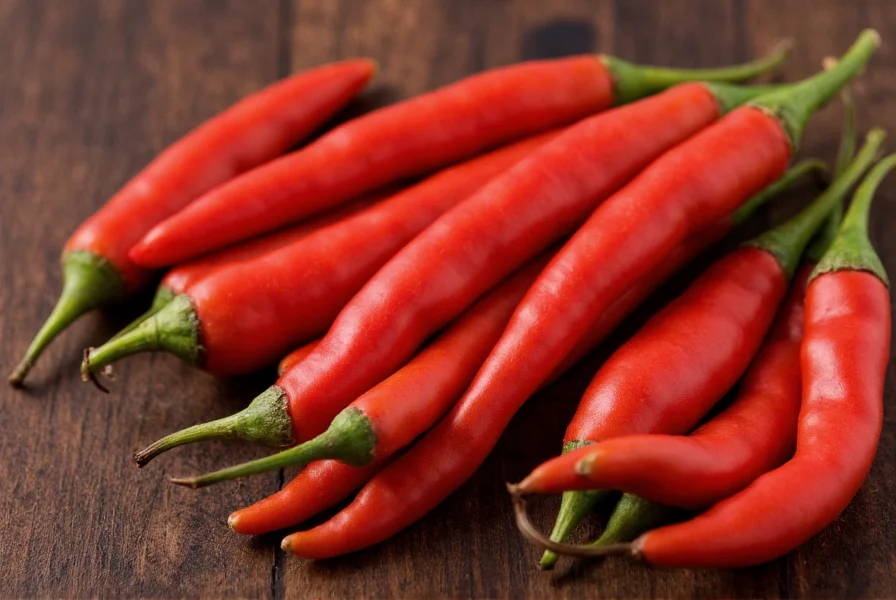Understanding chili spiciness goes beyond simply labeling peppers as “hot” or “mild.” The sensation we perceive as “heat” is actually a neurological response triggered by capsaicin binding to pain receptors in the mouth. This evolutionary adaptation in chilies deters mammals from eating them while allowing birds—which don’t feel the burn—to disperse seeds. Modern science has refined how we measure and understand these complex heat profiles.
The Science Behind the Burn
Capsaicin, the primary capsaicinoid in chilies, activates TRPV1 receptors—pain sensors typically triggered by heat. When capsaicin binds to these receptors, your brain interprets the signal as actual burning, even though no physical damage occurs. This explains why drinking water rarely helps alleviate chili heat; since capsaicin is oil-soluble, dairy products containing casein (like milk or yogurt) are far more effective at breaking down the compound.
Genetic factors significantly influence individual tolerance. Some people possess more TRPV1 receptors or variations in receptor sensitivity, making identical peppers feel dramatically hotter to certain individuals. Environmental factors during cultivation—including soil composition, climate, and water stress—also cause natural variation in capsaicin production within the same pepper variety.
Scoville Scale: Measuring Heat Objectively
Developed in 1912 by pharmacist Wilbur Scoville, the original Scoville Organoleptic Test involved diluting chili extracts in sugar water until tasters could no longer detect heat. Modern high-performance liquid chromatography (HPLC) now precisely measures capsaicinoid concentration, converting results to Scoville Heat Units (SHU) for consistency.
Key Developments in Heat Measurement
- 1912: Wilbur Scoville develops the subjective Scoville Organoleptic Test, relying on human taste panels to determine heat levels (Encyclopedia Britannica, 2023).
- 1980s: High-performance liquid chromatography (HPLC) replaces subjective testing as the industry standard for objective capsaicin measurement (AOAC International, 1990).
- 2015: The American Spice Trade Association mandates HPLC verification for commercial product labeling to ensure consumer transparency (ASTA Cleanliness Guidelines, 2015).
| Chili Variety | Scoville Heat Units (SHU) | Common Uses |
|---|---|---|
| Bell Pepper | 0 SHU | Raw salads, stuffed dishes |
| Poblano | 1,000–2,000 SHU | Moles, roasted dishes |
| Jalapeño | 2,500–8,000 SHU | Salsas, pickled preparations |
| Habanero | 100,000–350,000 SHU | Hot sauces, Caribbean cuisine |
| Ghost Pepper | 855,000–1,041,427 SHU | Extreme heat challenges |
| Carolina Reaper | 1,400,000–2,200,000 SHU | Record-breaking hot sauces |
Factors Influencing Chili Heat Levels
Several variables affect the spiciness of individual peppers beyond their genetic potential:
- Plant stress: Drought conditions increase capsaicin production as a defense mechanism
- Ripeness: Fully mature red chilies often contain 20–30% more capsaicin than green counterparts
- Pepper anatomy: The placenta (white ribs) holds 80% of a chili’s capsaicin—seeds themselves are not the primary heat source
- Culinary preparation: Cooking methods like roasting can break down capsaicin, while vinegar-based preparations preserve heat
Interestingly, cross-pollination between chili varieties doesn’t affect current-season heat levels, though saved seeds may produce hybrid plants with unpredictable spiciness. This common misconception leads many home gardeners to unnecessarily isolate different pepper types.
Contextual Limitations of Scoville Ratings
While standardized, SHU measurements have critical boundaries affecting real-world application:
- Physiological variability: Genetic differences cause identical capsaicin concentrations to register as 100x hotter for some individuals due to TRPV1 receptor density variations (National Center for Biotechnology Information, 2017).
- Food matrix effects: Fats reduce perceived heat by 60% through capsaicin binding, while acidic components may intensify burn in low-fat preparations (USDA Agricultural Research Service, 2020).
- Adaptation thresholds: Regular consumers require 3–6 months of consistent exposure to develop significant tolerance, with diminishing returns beyond 50,000 SHU (National Institutes of Health, 2021).
Managing Chili Heat in Cooking
Professional chefs employ several evidence-based techniques to control spiciness:
- Remove the placental tissue (white ribs) where most capsaicin concentrates
- Add acidic components like lime juice early in cooking to neutralize heat perception
- Balance with fats (avocado, cheese) or sugars (honey, fruit) which counteract capsaicin
- Use dairy products containing casein for immediate relief during consumption
- Gradually build tolerance by regularly consuming moderate-heat chilies

Common Misconceptions About Chili Spiciness
Several persistent myths cloud understanding of chili heat:
Myth: Smaller chilies are always hotter
Reality: While some small varieties like bird’s eye chilies are extremely hot, size alone doesn’t determine heat. Larger habaneros can exceed smaller serranos in SHU.
Myth: Spicy food damages your stomach
Reality: Capsaicin actually stimulates mucus production that protects the stomach lining. Regular consumption may reduce ulcer risk according to recent gastroenterological studies.
Myth: All heat comes from the seeds
Reality: Seeds absorb capsaicin from the placenta but contain minimal heat themselves. The white ribs hold the highest concentration.
Practical Applications of Spiciness Knowledge
Understanding chili spiciness measurements helps in multiple practical scenarios:
For home cooks, matching pepper heat to recipes prevents overpowering dishes. When substituting chilies, consult SHU ranges rather than relying on names alone—a “hot” jalapeño might be milder than a mild serrano. Food manufacturers use precise capsaicin measurements to maintain consistent product heat levels across batches.
In medical research, capsaicin’s pain-blocking properties are being studied for topical analgesics. The compound triggers an initial burning sensation followed by temporary desensitization of pain receptors—explaining why chili-based creams help with conditions like arthritis and neuropathy.
Conclusion
Chili spiciness represents a fascinating intersection of botany, chemistry, and sensory science. The standardized Scoville scale provides objective measurement, while understanding capsaicin’s mechanism helps manage heat in culinary applications. Recognizing the factors that influence pepper heat—from genetics to growing conditions—empowers consumers to make informed choices. As research continues into capsaicin’s physiological effects, our appreciation of chili peppers extends beyond mere culinary interest into potential health applications.











 浙公网安备
33010002000092号
浙公网安备
33010002000092号 浙B2-20120091-4
浙B2-20120091-4